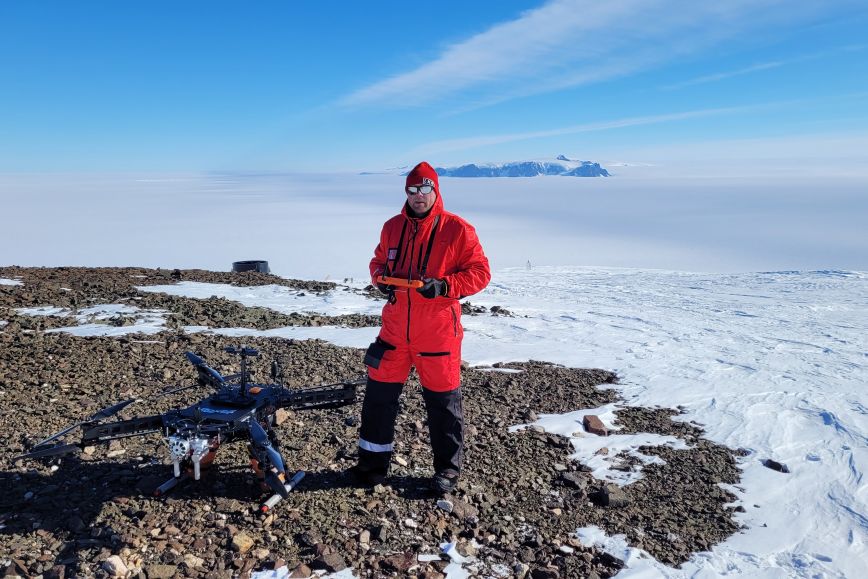Researchers of the NLS’s Geospatial Research Institute have participated in the Finnish Meteorological Institute’s FINNARP expeditions since the early 1990s. Based on long-term measurements, the ice mass at the edges of the Antarctic is decreasing, but in Queen Maud Land, which is where Finland’s research station Aboa is located, the ice has grown several metres thicker. One possible explanation for this is the increased snowfall in the warming environment, but more research is required to understand this phenomenon.
“This significant increase in ice mass differs entirely from the development on the other edges of the Antarctic, which makes it vitally important to understand the underlying causes,” says Aku Riihelä, research professor for the Finnish Meteorological Institute.
The new research project will study the causes by combining satellite observations, glacier models and on-field measurements in the area of the Aboa station. Field work makes use of drone-based laser scanning, which can be used to model areas of up to 10 square kilometres at once and refine the satellite data on changes in the snow and ice surface. Finland is one of the pioneers of drone-based laser scanning.
Melting glaciers also affect the Baltic Sea
Researchers prepare for Antarctic conditions by testing the methods in Finnish Lapland.
“Weather conditions in Antarctica may change quickly, and strong winds in particular can make taking measurements more difficult. In Lapland, we are collecting satellite data, carry out laser scans of the snow, as well as plan and practice the logistics of the measurement equipment to make sure that the studies at Aboa take place as effectively as possible. Thankfully, us Finns are used to the most difficult weather and we can draw on previous experiences to help prepare,” says research professor Antero Kukko.
Changes in the ice sheet also have an effect in Finland. As the glaciers melt, the sea level rises and may have an effect on ocean currents and rainfall. Globally, sea levels are rising by over 1.5 millimetres per year, and this rate has almost doubled in recent years. The land in Finland continues to rise after the previous ice age, and for now, that rate remains higher than that of the sea level.
“Changes in the mass of the Antarctic glaciers actually have a greater effect on the Baltic Sea’s level through the gravity field, compared to the ice sheet in Greenland, which are much closer,” says Aku Riihelä.
Further information
Antero Kukko, Research Professor, Finnish Geospatial Research Institute of the National Land Survey of Finland, +358 5040 94696, firstname.lastname@nls.fi
Aku Riihelä, Research Professor, Finnish Meteorological Institute, +358 5038 03308, firstname.lastname@fmi.fi
There have been many Academy of Finland-funded research projects to study the changes in Antarctic glacier mass, changes in gravity and the roughness of snow.
Read more about the projects


